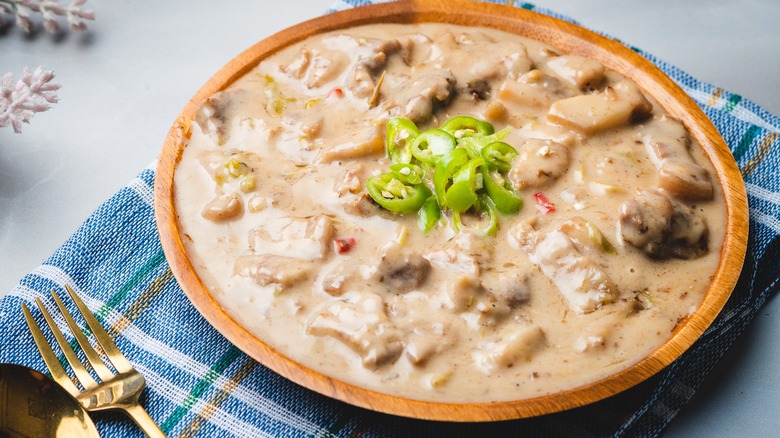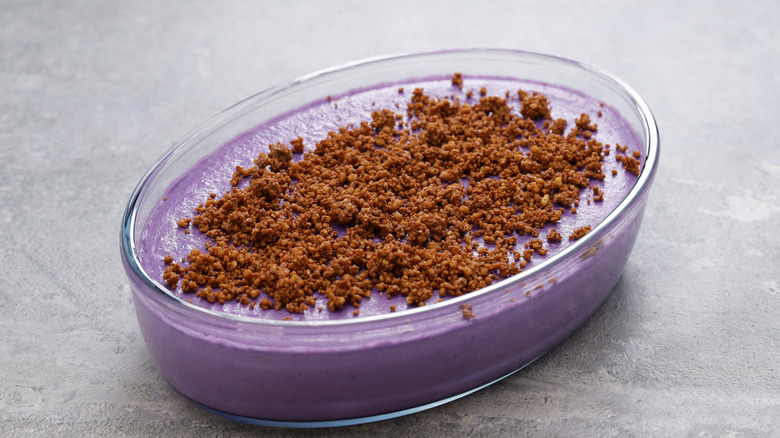The Sweet And Savory Ways Coconut Plays A Role In Filipino Cooking
Filipino cuisine is vibrant and rich, and there's a key ingredient that plays both a sweet and savory role: coconut. This shouldn't come as a surprise given that the Philippines is one of the largest producers and exporters of coconut oil and coconut on a global scale. Coconut is an accessible and versatile resource in this Southeast Asian country, hence its prominence in Filipino cooking.
While all parts of the coconut play a role in Filipino cuisine, it's coconut milk that often plays a starring role. Luxurious and subtly sweet, coconut milk is found in creamier sauces, such as in dishes like Adobo sa Gata (or Adobong Manok sa Gata). The usual adobo sauce, made with soy sauce, black pepper, and vinegar, becomes richer and thicker with the addition of velvety and creamy coconut milk. A second delicious savory Filipino dish that features coconut milk is ginataang manok, where succulent chicken simmers and stews in coconut milk and spicy ginger. Other proteins, like fish and beef, can substitute for chicken in other ginataang dishes.
Another savory staple dish in the Philippines that utilizes coconut milk is Bicol Express. In this dish, coconut milk tempers and balances the saltiness of shrimp paste (or bagoong alamang) and the spiciness of chili and Serrano peppers. On the sweeter side, coconuts are also indispensable in Filipino desserts.
Coconut is the hero of many Filipino desserts
Let's dive into how the versatile coconut takes center stage in Filipino sweets. One classic example is buko pie (or Filipino coconut pie), a popular buttery pastry complete with soft young coconut meat and creamy and sweet custard. Another dessert is the quick and easy maja blanca, or coconut pudding. To make this coconut pudding, one simply cooks down coconut milk with cornstarch, sugar, or condensed milk until thickened into a pudding, then allows it to cool before topping with latik.
Latik deserves a special mention as it's another dish, or garnishing, made by clarifying coconut milk. After heating coconut milk until the oil separates out, you get small, brown coconut curds that resemble ground pork but taste caramelized, toasty, and nutty. These are latik, so don't discard them. You would use latik to enhance and top various desserts in Filipino cooking.
Another popular Filipino sweet that utilizes coconut is the popular halo-halo, which was one of Anthony Bourdain's favorite Filipino desserts. Halo-halo is often a free-for-all dessert, with countless combinations and eclectic possibilities of ingredient mix-ins. Coconut jelly, coconut milk, and coconut ice cream often appear in halo-halo. Thus, from the creamy sauces of savory dishes to the rich and sweet delights of desserts, coconut is an indispensable part of the Filipino palate.

